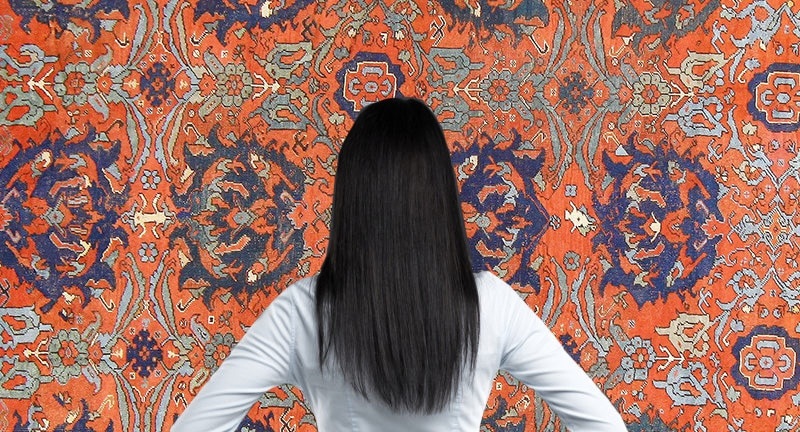Centuries old and based in tradition, the historic elements of oriental rugs are just as rich and full as the beautiful art form that has developed over time. Behind each rug lies some element of history which defines its sourcing (or region of origination), tradition associated with the rug’s construction, design/style of the rug’s ‘four corners,’ materials used in making the rug, and the technique/structure of the rug. These five (5) characteristics are the drivers behind what makes oriental rugs a true art form.
- Sourcing
While the term “oriental” may conjure up images of Far East Asia, oriental rugs can actually originate in many different areas of the world. Technically, and by the strictest definitions, these rugs can originate from Asia, China, India, Iran, Nepal, Pakistan, Russia, Tibet and Turkey. Persian rugs are a special classification as a subset of these rugs that originate in Iran (formerly known as Persia).
- Tradition
For many rug enthusiasts, knowing the tradition behind the rug adds to its ‘story.’ In many cases, the traditions behind a rug’s origins can be traced back to a particular region, province, village, town, or even, the specific tribe and elders associated with its construction.
- Design & Style
Did you know that the borders of an oriental carpet were used to signify the conveying of magical protection to those sitting in its confines? Part of the art form with these rugs involves how the cultural elements are literally interwoven into the carpets themselves. Examining elements of rug type, such as Ghali, Kelleghi or Kenareh, and what the field design means, significance of the medallions, along with the magical borders all add to the richness of the carpet’s art. But not limited to just traditional looks, find today’s rugs within the realm of modern, contemporary and transitional elements.
- Materials
Wool, sheep fur, silk, cotton, insect dyes for the reddest reds and plant dyes for eye catching hues, are just a few of the materials used to create these masterful objects. Built on longstanding tradition and modernized with tools and technology of today, these carpets yield many diverse variations with the numerous material combos used.
- Technique & Structure
Today’s carpets can be found as originating in multiple ways. By hand, on looms, various tools, knotting style and others can help define the distinguishing characteristics of a rug. Additionally, strict adherence to ethical sourcing ensures proper production with labor sources as well.
Whether hand-knotted or made via looms, oriental carpets offer artfully crafted fixtures in any use. Recognizing the great art form associated with oriental rugs means working with professional who have extensive and entrenched knowledge about what makes these rugs so great. Being able to critically examine and critique these works of art can not only yield greater understanding of their significance, but increased appreciation of their framed aesthetics. Viewing these rugs in an art gallery setting, such as that offered in the Rugs by Zhaleh settings, are a great way to see some of these beautiful works of art.




